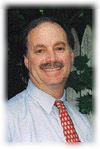![]()
![]()

From America's Network, February 1, 2000
http://www.americasnetwork.com/issues/2000issues/20000201/20000201_kiss.htm
Now, telephone customers can surf the Internet without missing calls – and without a second line – thanks to Santa Barbara, Calif., startup CallWave (www.callwave.com). "We're competing for the multibillion-dollar residential second-line business," says Dave Hofstatter, CallWave's president.
It works like this: When a CallWave subscriber is online and
a new call comes in, it is forwarded-on-busy to the CallWave platform.
The caller's experience is that he's reached an answering machine.
The CallWave platform uses an
instant-messaging-like protocol to notify the subscriber's computer
of incoming calls. When a new call arrives, the subscriber's computer
rings and its CallWave window displays "new call" (and
other call progress messages). When the caller leaves a message,
it is instantly downloaded as a compressed audio file and played
through the subscriber's computer sound system.
To set up the application, the subscriber downloads the CallWave client from the company's Web site. Once installed, the CallWave client displays a tiny window whenever the subscriber goes online. The subscriber also needs to order forward-on-busy from the LEC (at $0.75 to $3.40 per month) and set it to forward calls to CallWave's platform.
CallWave's application is evolving in ÔInternet time.' Soon it will show caller ID, allowing subscribers to screen calls in real time. Subscribers also will be able to cause the CallWave client to drop the Internet connection so the CallWave platform can complete the call by extending it to the originally called number when the line clears.
The price is unbeatable – it's free. CallWave's business model is based on ad revenue; the CallWave window displays ads when there is no incoming call. A click on any ad starts the browser and brings up the advertiser's Web site.
'CallWave fits the pattern of other
successful disruptions.'-- Clayton Christensen
Since CallWave's early-October launch, over half a million people have downloaded the client; as many as 15,000 have downloaded it in a single day. CallWave has handled some 10 million calls.
CallWave gets Ôlove mail' every day. "Today, for example, I heard from a nurse who was delighted that she could log on while she was on-call," Hofstatter says.
Competition is weak, Hofstatter claims. Similar LEC offerings are starting to appear; these carry a monthly charge, require customers to buy LEC call waiting and voice mail, or require them to use the LEC's Internet service. Internet-oriented companies such as Pagoo and Internet Call Manager charge for similar services. Still others, like Onebox and Ureach, offer unified messaging services, but these appeal to super-techie power users, he says.
"The huge opportunity is down market," Hofstatter explains. "A new wave of people is discovering the Internet. We're borrowing the familiar answering machine paradigm so everybody can relate to it."
Harvard Business School Prof. Clayton Christensen thinks this strategy is well-positioned to disrupt the LEC second-line business. "CallWave fits the pattern of other successful disruptions," he says.
CallWave's biggest hurdle is getting the LECs to sell forward-on-busy at all. "One in five CallWave subscribers is misinformed by their LEC," asserts Hofstatter. "Sometimes the LEC's agent says that forward-on-busy isn't available when in fact it is. Other times, the agent tries to steer our subscriber toward expensive LEC services like voice mail."
"The major LECs have forward-on-busy tariffs in every state," adds Dave Trandal, CallWave's vice president of operations. "This obligates them to sell it to all comers. But every state with an uncooperative LEC requires separate action. What a pain!"
CallWave is working with major LECs to resell forward-on-busy. The company is developing the ability to provision the feature seamlessly. "It will be easier for subscribers if we do it," Trandal says.
There are many ways to compete in The Stupid Network. Hofstatter believes that CallWave is fulfilling the promise of the Telecom Act of 1996 by bringing innovative, practical competition to local markets. "Today, local competition exists for business markets, but not for residential service," Hofstatter says. "CallWave's mission is to redraw this picture."
(Gentle reader, if you think this column is biased, you're right! I'm on CallWave's advisory board. We're working to free millions of residential customers from LEC second-line charges. The big LECs still don't comprehend the Internet, but the benefits of the Internet second-line boom go straight to their clueless bottom line. If there is justice in the universe, those second lines will return to the Internet, where they belong.)
David S. Isenberg can be contacted at www.isen.com.
Copyright 2000 Advanstar Communications.